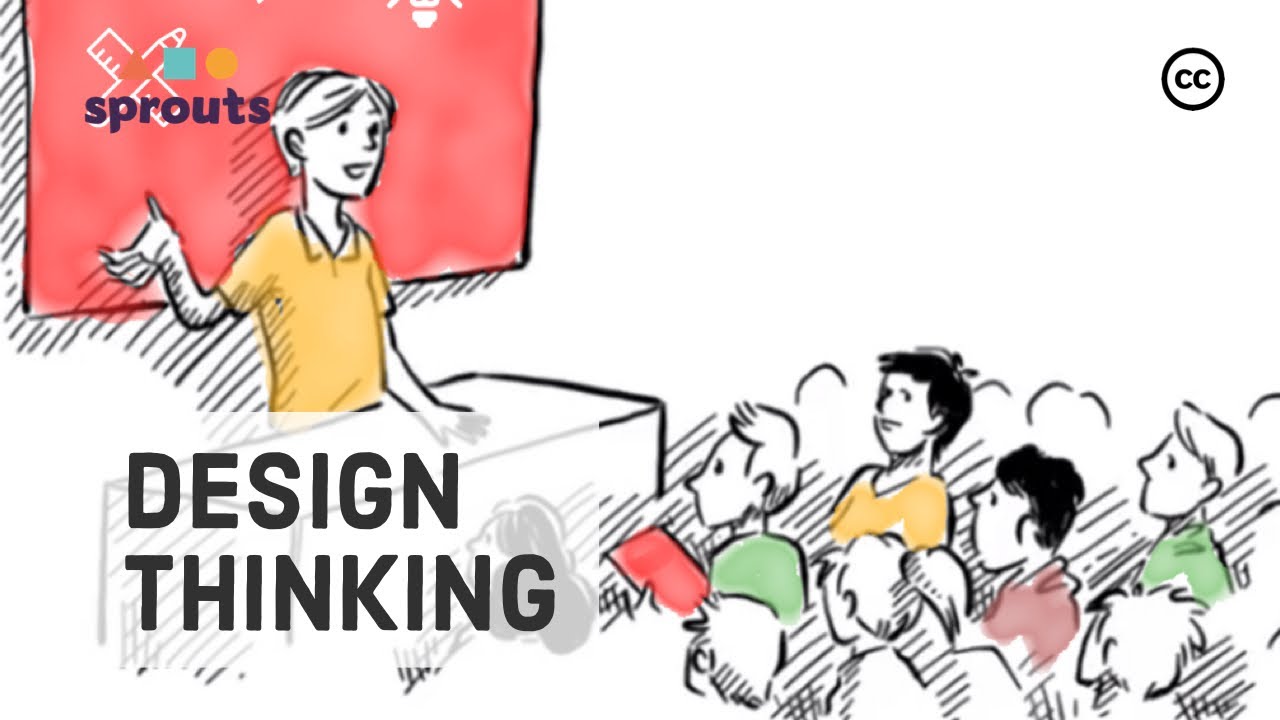Design Thinking - A Human-Centered Approach To Problem-Solving
Design thinking is a way to solve problems that focuses on understanding the users and what they want, prototyping and testing solutions, and iterating based on what people say.
Author:George EvansApr 07, 202358.2K Shares797.4K Views

Design thinkingis a problem-solving methodology that emphasizes understanding the users and their needs, prototyping and testing solutions, and iterating based on feedback.
It is a human-centered approach that helps designers and organizations develop innovative solutions to complex problems.
In this article, we will explore the key principles of design thinking, its benefits, and how it can be applied in various industries.
What Is Design Thinking?
Design thinking is a problem-solving methodology that involves understanding and empathizing with the user or customer, defining the problem or challenge, ideating and brainstorming potential solutions, prototyping and testing the most promising solutions, and iterating and refining them based on feedback.
It is a human-centered approach that prioritizes user needs and experiences, collaboration and iteration, and creativity and experimentation.
It is used in a variety of fields and industries, including product design, service design, software development, and business strategy.
Design Thinking Process
Design thinking is a problem-solving approach used by designers, engineers, and businesses to solve complex problems in a user-centered and creative way. The design thinking process typically involves five stages: empathy, define, ideate, prototype, and test.
Empathy
The first stage of design thinking involves understanding the needs, wants, and desires of the people who will be using the product or service.
This involves conducting research, observing behavior, and conducting interviews with users to gain a deeper understanding of their needs.
Define
Once you have a clear understanding of the user's needs, the next step is to define the problem you are trying to solve.
This involves analyzing the data collected during the empathy stage and identifying patterns and insights to define the problem in a clear and concise way.
Ideate
The ideation stage is where you brainstorm and generate ideas to solve the problem. This can be done individually or as a group, and involves generating a wide range of ideas without worrying about their feasibility or practicality.
Prototype
The fourth stage of the design thinking process involves creating a prototype of the solution you have ideated. This can be done using various materials and techniques, and can range from a simple sketch to a physical prototype.
Test
The final stage of the design thinking process involves testing the prototype with users to get feedback and iterate on the design. This feedback is then used to refine and improve the design until it meets the needs of the user.

The Design Thinking Process
Key Principles Of Design Thinking
Design thinking is a creative process that follows a set of principles to guide problem-solving. Here are the key principles of design thinking:
Empathize
The first step of design thinking is to empathize with the users and understand their needs, wants, and pain points.
This requires designers to engage with users directly and observe their behaviors, preferences, and motivations. Empathy is critical to developing solutions that are relevant and meaningful to the users.
Define
The next step is to define the problem statement and the user needs. This involves synthesizing the insights gathered during the empathy stage and creating a clear and concise problem statement.
Defining the problem statement is essential to avoid developing solutions that do not address the users' needs.
Ideate
Once the problem statement is defined, the next step is to generate ideas for possible solutions.
The ideation stage encourages designers to think creatively and generate a wide range of ideas without evaluating them. The goal is to generate as many ideas as possible and build on each other's ideas.
Prototype
The prototyping stage involves creating a physical or digital model of the solution to test with users.
Prototyping allows designers to quickly test and iterate the solution based on user feedback. The prototype can be a simple sketch, a 3D model, or a clickable digital prototype.
Test
The final stage of design thinking is testing the prototype with users. Testing allows designers to gather feedback from users and iterate the solution based on the feedback.
Testing should be conducted early and often to refine the solution and ensure that it meets the users' needs.
Benefits Of Design Thinking
Design thinking offers several benefits to organizations and individuals, including:
- User-centric solutions -Design thinking puts the users at the center of the problem-solving process, which leads to solutions that are relevant and meaningful to the users.
- Innovation -The ideation stage of design thinking encourages designers to think creatively and generate a wide range of ideas, which can lead to innovative solutions.
- Collaboration -Design thinking is a collaborative process that involves cross-functional teams working together to solve complex problems.
- Iterative approach -The prototyping and testing stages of design thinking allow designers to iterate quickly and refine the solution based on user feedback.
Applications Of Design Thinking
Design thinking can be applied in various industries and domains, including:
- Product design -Design thinking can help product designers develop user-centric products that meet the users' needs and preferences.
- Service design -Design thinking can be used to improve the customer experience and develop services that meet the users' needs.
- Organizational design -Design thinking can be applied to organizational design to improve employee experience and productivity.
- Social innovation -Design thinking can be used to develop innovative solutions to social problems, such as poverty, healthcare, and education.
People Also Ask
How Is Design Thinking Used In Business?
Design thinking is often used in business to solve complex problems and create innovative solutions.
It involves a human-centered approach to problem-solving, focusing on understanding the needs and perspectives of the people who will be using the product or service.
By using design thinking, businesses can create products and services that are more user-friendly, effective, and profitable.
How Can Design Thinking Be Integrated Into A Company's Culture?
Design thinking can be integrated into a company's culture by promoting a human-centered approach to problem-solving, providing training and resources, encouraging collaboration, and creating a culture of experimentation and empathy. This fosters a more innovative and customer-focused mindset, leading to better outcomes.
What Are Some Examples Of Design Thinking In Action?
Design thinking can be seen in action in many different industries and contexts. For example, the healthcare industry has used design thinking to create more patient-centered care experiences.
The technology industry has used design thinking to create more user-friendly products and services. And the education industry has used design thinking to create more engaging and effective learning experiences.
How Can I Learn More About Design Thinking?
There are many resources available for learning more about design thinking, including online courses, books, and workshops.
Some popular resources include the Stanford d.school's Design Thinking Bootcamp Bootleg, the book "Design Thinking: Integrating Innovation, Customer Experience, and Brand Value," and the online course "Design Thinking Fundamentals" offered by IDEO U.
Final Words
Design thinking is a powerful problem-solving methodology that helps designers and organizations develop innovative solutions to complex problems.
By following the key principles of design thinking, designers can develop user-centric solutions that are relevant and meaningful to the users.
Design thinking offers several benefits, including user-centric solutions, innovation, collaboration, and an iterative approach.
Design thinking can be applied in various industries and domains, making it a versatile problem-solving methodology.

George Evans
Author
George Anderson, an exceptional architectural designer, envisions and brings to life structures that transcend the realm of imagination. With an unwavering passion for design and an innate eye for detail, George seamlessly blends form and function, creating immersive spaces that inspire awe.
Driven by a deep appreciation for the interplay of space, light, and materials, George's innovative approach redefines the possibilities of architectural design. His visionary compositions leave an indelible mark, evoking a sense of wonder and transforming the built environment.
George Anderson's transformative designs and unwavering dedication continue to shape the architectural landscape, pushing the boundaries of what is possible and inspiring generations to come.
Latest Articles
Popular Articles